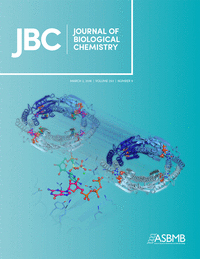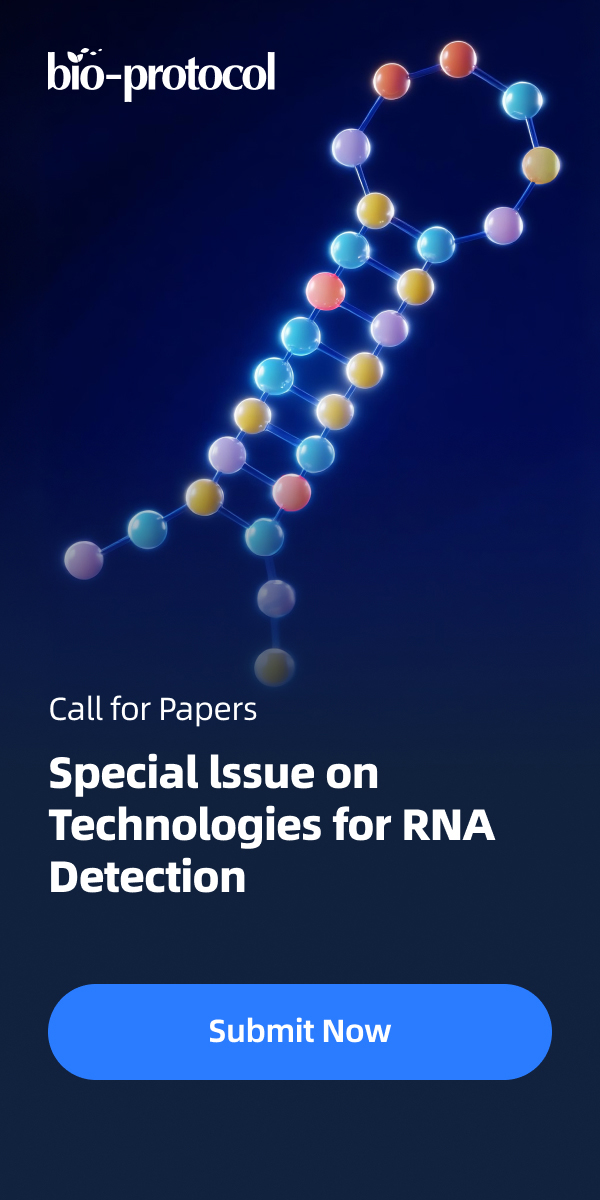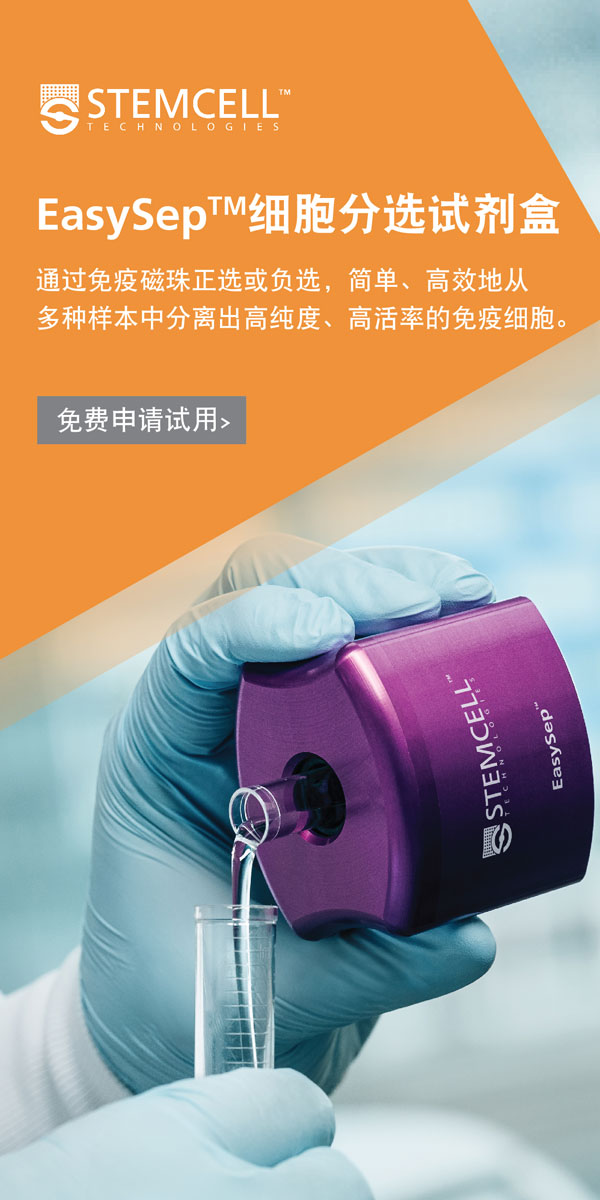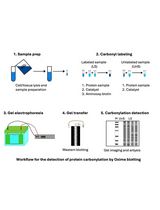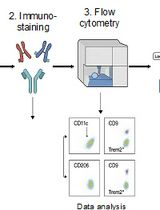- EN - English
- CN - 中文
Using Stable Isotopes in Bone Marrow Derived Macrophage to Analyze Metabolism
利用稳定同位素研究骨髓源性巨噬细胞的代谢
发布: 2018年09月05日第8卷第17期 DOI: 10.21769/BioProtoc.3003 浏览次数: 8263
评审: Vivien Jane Coulson-ThomasMindy CallAnonymous reviewer(s)

相关实验方案
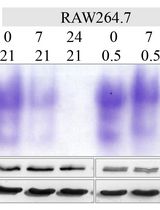
哺乳动物线粒体和胞质顺乌头酸酶的凝胶内活性测定——分区特异性氧化应激与铁状态的替代标志物
Wing-Hang Tong and Tracey A. Rouault
2024年12月05日 2116 阅读
Abstract
Using gas chromatography mass spectrometry (GC-MS) to analyze the citric acid cycle (CAC) and related intermediates (such as glutamate, glutamine, GABA, and aspartate) is an analytical approach to identify unexpected correlations between apparently related and unrelated pathways of energy metabolism. Intermediates can be as expressed as their absolute concentrations or relative ratios by using known amounts of added reference standards to the sample. GC-MS can also distinguish between heavy labeled molecules (2H- or 13C-labeled) and the naturally occurring most abundant molecules. Applications using tracers can also assess the turnover of specific metabolic pools under various physiological and pathological conditions as well as for pathway discovery.
The following protocol is a relatively simple method that is not only sensitive for small concentrations of metabolic intermediates but can also be used in vivo or in vitro to determine the integrity of various metabolic pathways, such as flux changes within specific metabolite pools. We used this protocol to determine the role of phosphoenolpyruvate carboxykinase 1 (Pck1) gene in mouse macrophage cells to determine the percent contribution from a precursor of 13C labeled glucose into specific CAC metabolite pools.
Background
With the development of altered gene expression in cells and mice, there is a need to understand how these deleted or over-expressed genes impact the regulation of metabolic pathways. In this protocol, we used stable isotopes to determine how the flux of glucose into the CAC altered the contribution of glucose into the pools of citrate, succinate and malate. The use of stable isotopes with targeted analysis of metabolism is just one benefit to using stable isotopes in cell culture.
The method described in this protocol for functional quantification of intracellular metabolites was done by growing bone marrow-derived macrophage cells (BMDM) in U-13C-glucose medium. The cells were extracted in organic solvent and the percent contribution of 13C glucose was calculated. The fractional amount of 13C label incorporated into each the CAC-related metabolite pools was also determined. The calculations were based on the ratio of 13C label of each intracellular metabolite versus the unlabeled metabolite; for absolute concentration analysis of cell samples, one would need to correct for reference to the intracellular volume of the extracted cells (Feldberg et al., 2009), as well as add non-interfering reference standards for quantifying of levels of CAC intermediates, as previously described (Ko et al., 2018). This protocol can also be used in isolated perfused livers or whole body metabolism studies (Yang et al., 2008a; Zhang et al., 2015).
Using a novel mouse model that had a deletion of phosphoenolpyruvate carboxykinase 1 (Pck1) in the myeloid cells (Pck1MC-KO), stable isotopes were used to determine the role of this gene in macrophages (Ko et al., 2018) with respect to glucose metabolism. The protocol explains the isolation and differentiation of BMDM. These cells were isolated, differentiated and incubated with U13C-glucose to analyze their metabolism. The BMDM cells were collected, and the fractional contribution of the precursor to the product was based on the mole percent enrichments (MPE) derived from the 13C label incorporation into the total pool of each of the metabolites (products). Mass isotopomer analysis enables the measurements of unlabeled analyte (M0) relative to the labeled analyte (M+1, 2, or 3, etc.), (Yang et al., 2008a; Kombu et al., 2011; Ko et al., 2018). The measured mass isotopomer distributions were calculated for each of the masses and expressed as mole percent enrichment (MPE) after correcting for natural isotope abundances.
Materials and Reagents
- FisherbrandTM sterile 100 mm x 15 mm polystyrene Petri dish (Fisher Scientific, Fisher ScientificTM, catalog number: FB0875713 )
- Costar® TC-Treated 6-well Plates (Corning, catalog number: CLS3506 )
- 15 ml conical tubes (SARSTEDT, catalog number: 62.554.502 )
- Sterile individually packaged 5 ml pipettes (SARSTEDT, catalog number: 86.1253.001 )
- Sterile 1 ml syringe with 26 G needle (Fisher Scientific, catalog number: 14-829-6A)
Manufacturer: BD, catalog number: 305537 . - 10 ml syringes (Thermo Fisher Scientific, catalog number: S7515-10 )
- BD Precisionglide® syringe needles, gauge 23, L3/4 in. (BD, catalog number: 305143 )
- BD Precisionglide® syringe needles, gauge 18, L 1 in. (BD, catalog number: 305195 )
- Cell strainer, 70 μm, sterile (Corning, catalog number: 352350 )
- 50 ml conical tube (SARSTEDT, catalog number: 62.547.254 )
- Disposable Borosilicate Glass tubes 16 mm x 125 mm (Globe Scientific, catalog number: 1515 )
- LysM-specific Pck1 knock-out mice (Pck1MC-KO mice)
Note: The mice were generated by crossing Pck1flox/flox mice with LysM-Cre+/− transgenic mice expressing Cre-recombinase under control of the LysM promoter. Pck1flox/flox mice were used as controls. All mice are in the C57Bl/6J background. All animals were housed in a temperature-controlled facility with a 12 h light/dark cycle in compliance with the Institutional Animal Care and Use Committee (IACUC) of Case Western Reserve University. - Lipopolysaccharides from Escherichia coli 026:B6 (Sigma-Aldrich, catalog number: L8274 )
- IL-4, Animal-component free, recombinant, expressed in E. coli (Sigma-Aldrich, catalog number: SRP3211 )
- Ethanol Solution 70%, Molecular Biology Grade (Fisher Scientific, Fisher BioagentsTM, catalog number: BP8201500 )
- FBS (fetal bovine serum) (Fisher Scientific, FisherbrandTM, catalog number: 03-600-511 )
- Dulbecco's modified Eagle Medium (DMEM) high glucose, pyruvate (Thermo Fisher Scientific, GibcoTM, catalog number: 11995065 )
- Penicillin-streptomycin (Thermo Fisher Scientific, GibcoTM, catalog number: 10570063 )
- L-glutamine GlutaMAX (Thermo Fisher Scientific, GibcoTM, catalog number: 25030081 )
- Recombinant Murine Macrophage Colony-stimulating factor (PeproTech, catalog number: 315-02 )
- Glucose (Sigma-Aldrich, catalog number: G8270 )
- Lipopolysaccharide (LPS) from E. coli 02:B6 (Sigma-Aldrich, catalog number: L8274 )
- Interleukin-4 (IL-4) (PeproTech, catalog number: 214-14 )
- [13C]-succinate [Sodium bis (2-ethylhexyl) sulfo (succinate-13C4)] (98%) (Sigma-Aldrich, catalog number: 719269 )
- [13C]-malate (Sigma-Aldrich, catalog number: 750484 )
- [13C]-citrate (Sigma-Aldrich, catalog number: 492078 )
- Methanol HPLC (Sigma-Aldrich, catalog number: 1005706 )
- BSTFA + 10% TMCS-Regisil® (Regis Technologies, CAS: 25561-30-2; 75-77-4)
- N-Methyl-N-(t-butyldimethylsilyl) trifluoroacetamide (TBDMS) (Sigma-Aldrich, catalog number: 394882-25ML )
Note: If using TMCS as a derivative, see references Yang et al. (2008a); Kombu et al. (2011); Ko et al. (2018). - Acetic acid, Glacial (Certified ACS) Fisher Chemical (Fisher Scientific, catalog number: A38-212)
Manufacturer: Thermo Fisher Scientific, Thermo ScientificTM, catalog number: FLA38212 . - Methanol, OptimaTM LC/MS Grade, Fisher Chemical (Fisher Scientific, Thermo ScientificTM, catalog number: A456-1 )
- Water, OptimaTM LC/MS Grade, Fisher Chemical (Fisher Scientific, Thermo ScientificTM, catalog number: W64 )
- QuickStart TM Bradford Protein Assay Kit 1 (Bio-Rad Laboratories, catalog number: 5000201 )
- Generate macrophage differentiation media (MDM) (see Recipes)
- 5% acetic acid in methanol/water (1:1) extraction buffer (see Recipes)
- LPS stock solution (see Recipes)
- IL-4 stock solution (see Recipes)
Equipment
- Kelly Forceps, Box Lock, Straight Steel (Grainger, catalog number: 4WPD9 )
- Sterile cell scraper (Fisher Scientific, FisherbrandTM, catalog number: 08-100-241 )
- GC vial cap, 9 mm (Agilent Technologies, catalog number: 5182-0717 )
- GC vial, 2 ml (Agilent Technologies, catalog number: 5181-3375 )
- Thermo ScientificTM NalgeneTM Polypropylene Graduated Cylinders (Fisher Scientific, catalog number: 08-572D)
Manufacturer: Thermo Fisher Scientific, Thermo ScientificTM, catalog number: N36620100 . - Dumont forceps #5 (Fine Science Tools, catalog number: 11252-20 )
- Dumont forceps #55 (Fine Science Tools, catalog number: 11255-20 )
- Dumont forceps AA (Fine Science Tools, catalog number: 11210-20 )
- Tissue culture hood (Thermo Fisher Scientific, catalog number: 51022482 )
- Refrigerated tabletop centrifuge for 15-50 ml conical tubes (Eppendorf, model: 5430R )
- 37 °C, 5% CO2 water-jacketed incubator (Thermo Fisher Scientific, Thermo ScientificTM, model: 3110 )
- P20 pipetman (Gilson, catalog number: F123600 )
- P200 pipetman (Gilson, catalog number: F123601 )
- P1000 pipetman (Gilson, catalog number: F123602 )
- Homogenizer for tissues (IKA, model: T25 digital ULTRA-TURRAX®, catalog number: 0003725001 )
- Dry Block Heater (VWR, catalog number: 75838-282 )
- Frigidaire 13.8 cu. Ft. Frost Free Upright Freezer (The Home Depot)
- Large Series, Single Door, Hinged Autoclave (Consolidated Sterilizer Systems, model: LR-36E )
- Basic Laboratory Hoods (Labconco, model: 2246500 )
- Inverted light microscope (Leica Microsystems, model: DM IL LED )
- GC-MS (Agilent Technologies, model: 5973-MSD ) equipped with an Agilent 6890 GC system
- DB-17MS capillary column, 30 m x 0.25 mm x 0.25 μm (Agilent Technologies)
Procedure
文章信息
版权信息
© 2018 The Authors; exclusive licensee Bio-protocol LLC.
如何引用
Readers should cite both the Bio-protocol article and the original research article where this protocol was used:
- Ko, C. W., Counihan, D., DeSantis, D., Sedor-Schiffhauer, Z., Puchowicz, M. and Croniger, C. M. (2018). Using Stable Isotopes in Bone Marrow Derived Macrophage to Analyze Metabolism. Bio-protocol 8(17): e3003. DOI: 10.21769/BioProtoc.3003.
- Ko, C. W., Counihan, D., Wu, J., Hatzoglou, M., Puchowicz, M. A. and Croniger, C. M. (2018). Macrophages with a deletion of the phosphoenolpyruvate carboxykinase 1 (Pck1) gene have a more proinflammatory phenotype. J Biol Chem 293(9): 3399-3409.
分类
免疫学 > 免疫细胞分离 > 巨噬细胞
细胞生物学 > 细胞新陈代谢 > 其它化合物
您对这篇实验方法有问题吗?
在此处发布您的问题,我们将邀请本文作者来回答。同时,我们会将您的问题发布到Bio-protocol Exchange,以便寻求社区成员的帮助。
Share
Bluesky
X
Copy link


